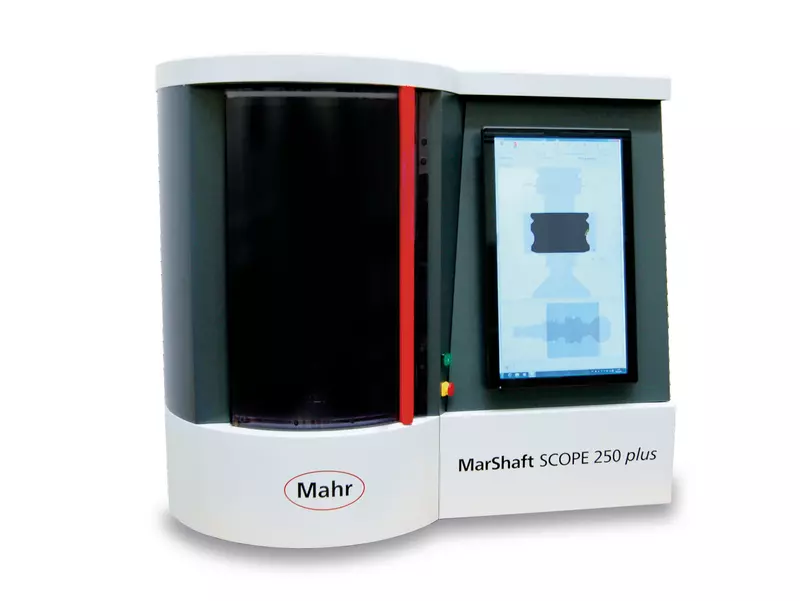What is Fully Automatic Optical Shaft Measuring System?
A Fully Automatic Optical Shaft Measuring System is an advanced metrology tool designed for precise, non-contact measurement and inspection of cylindrical objects such as shafts, spindles, and other rotational parts. This system uses optical techniques, typically involving cameras, lenses, and light sources, to capture high-resolution images of the shaft. These images are then analyzed to measure various parameters such as diameter, roundness, straightness, concentricity, and other geometric dimensions.
Technical Components and Functionality:
- Optical System:
- Cameras: High-resolution cameras are used to capture detailed images of the shaft. Multiple cameras may be used to capture different angles or to provide 3D measurements.
- Lenses: Precision lenses are used to focus on the shaft and magnify its features, enabling the system to detect minute deviations and defects.
- Light Sources: LED or laser light sources provide uniform illumination of the shaft, ensuring that the images captured by the cameras are clear and free of shadows or reflections.
- Measurement Techniques:
- Image Processing Algorithms: The system uses advanced image processing algorithms to analyze the captured images. These algorithms detect edges, contours, and other features of the shaft, allowing for accurate measurement of its dimensions.
- Laser Triangulation: In some systems, laser triangulation is used to measure the distance between the shaft surface and the camera. This method is highly accurate for measuring surface profiles and detecting any deviations from the desired geometry.
- Shadow Casting: A collimated light beam may be used to cast a shadow of the shaft on a sensor. The profile of the shadow is analyzed to determine the dimensions of the shaft.
- Automated Measurement:
- Rotational Axis: The shaft is typically mounted on a rotational axis that allows it to be rotated at precise angles. This enables the system to capture images of the entire circumference of the shaft without manual intervention.
- Translation Stages: Linear translation stages move the shaft along its length, allowing the system to measure different sections of the shaft in a fully automated manner.
- Software Control: The entire measurement process is controlled by sophisticated software that automates the capturing, processing, and analysis of images. The software also provides a user interface for setting up measurement parameters and viewing results.
- Data Output and Analysis:
- Measurement Data: The system generates precise measurements of the shaft’s geometric features, including diameter, taper, concentricity, roundness, and straightness.
- 3D Models: Some systems can create 3D models of the shaft based on the captured data, providing a comprehensive view of its geometry.
- Reporting: The system can generate detailed reports that include measurement results, tolerance checks, and visual representations of any detected defects or deviations.
Applications:
- Quality Control: Fully automatic optical shaft measuring systems are commonly used in manufacturing environments for quality control purposes. They ensure that shafts meet the required specifications before being assembled into larger systems.
- Research and Development: In R&D, these systems help engineers to refine the design of shafts and other cylindrical components by providing precise feedback on how changes in design affect the final product.
- Precision Manufacturing: Industries such as automotive, aerospace, and medical device manufacturing use these systems to ensure that critical components like drive shafts, camshafts, and surgical tools are manufactured to exacting standards.
Advantages:
- High Precision: The non-contact optical measurement provides extremely high precision, often in the micrometer or sub-micrometer range.
- Speed: The automation of the system allows for rapid inspection of multiple shafts, significantly reducing measurement time compared to manual methods.
- Non-Contact Measurement: Since the system is optical, there is no physical contact with the shaft, eliminating the risk of surface damage during measurement.
- Repeatability: The automated nature of the system ensures that measurements are consistent and repeatable, which is critical for high-volume production environments.
In summary, a Fully Automatic Optical Shaft Measuring System is a sophisticated tool that combines optics, automation, and software to provide highly accurate and efficient measurement of cylindrical components. Its use is vital in industries where precision and quality control are paramount.


